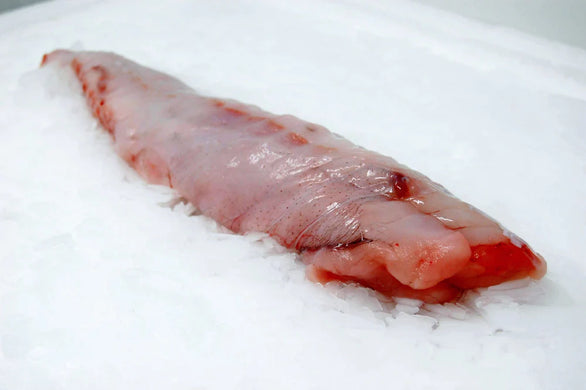
blog
How to Cook Fresh Monkfish at Home
 Lindsey Qualman
January 08, 2024
Lindsey Qualman
January 08, 2024
Monkfish, known for its distinct flavor and versatility, is an exciting choice for home chefs who love to experiment with seafood.
Here’s a detailed guide to help you understand and appreciate our monkfish, a unique and delicious option!
Characteristics and Flavor Profile:
- Appearance and Taste: Monkfish is often referred to as the poor man's lobster due to its sweet, mildly earthy flavor and firm texture. The meat, primarily from the tail, is dense and does not flake like other fish. It’s covered in a blue-grey membrane, which should be removed before cooking as it shrinks and toughens when heated.
- Versatility: This fish is a favorite among chefs for its versatility. It can be grilled, sautéed, baked, broiled, steamed, and even used in chowders and stews.
- Nutrition: Monkfish is a lean white fish, high in protein and low in fat. It’s a good source of B vitamins, potassium, phosphorus, and selenium.
Cooking Tips:
- Preparation: Ensure the fish is cleaned properly, removing any visible scales and the blue-grey membrane. Monkfish tail meat, being firm and almost boneless, is particularly easy to prepare and enjoy.
- Cooking Methods: The firm texture of monkfish makes it less likely to fall apart during cooking. It is great for grilling, sautéing, and baking. When cooking, buy a slightly larger fillet than needed, as the meat tends to lose moisture and shrink.
- Recipe Ideas: Monkfish pairs well with various seasonings and sauces. A popular recipe is Monkfish with Lemon-Caper Sauce, featuring seared monkfish fillets topped with a tangy sauce. Its mild flavor also makes it a great candidate for zesty marinades.
Sustainability and Availability:
- Origin: Monkfish available at Four Star Seafood & Provisions are sourced from the Atlantic through Boston, using trawl methods, and are a good alternative in terms of sustainability.
- Global Supply: Monkfish is found worldwide, with primary harvesting areas in the North Atlantic. The tail meats, ranging from 1 to 4 pounds, are the most commonly used parts.
Pairing and Serving Suggestions:
- Sauces and Sides: Monkfish goes well with traditional beurre blanc sauce, lemon and butter sauce, creamy risotto, mashed potatoes, and various vegetables like potatoes, carrots, and mushrooms.
- Substitutions: If monkfish is unavailable, halibut, lobster meat, or scallops can be good substitutes due to similar textures and flavors.
Storage and Usage:
- Refrigeration: Store the seafood in the coldest part of the refrigerator at 32 degrees for up to 3 days. Wrap the fillets in paper towels to absorb moisture and firm up the fish for cooking.
- Freezing: If not consumed within 3 days, place it in the freezer. Thaw by keeping it in the refrigerator overnight.
Monkfish, with its distinct taste and culinary flexibility, is a fantastic choice for home chefs looking to create restaurant-quality dishes. Its ability to mimic lobster's texture and flavor at a more accessible price point makes it an appealing seafood option to explore in your kitchen. Shop our fresh monkfish here if it's available this week!


